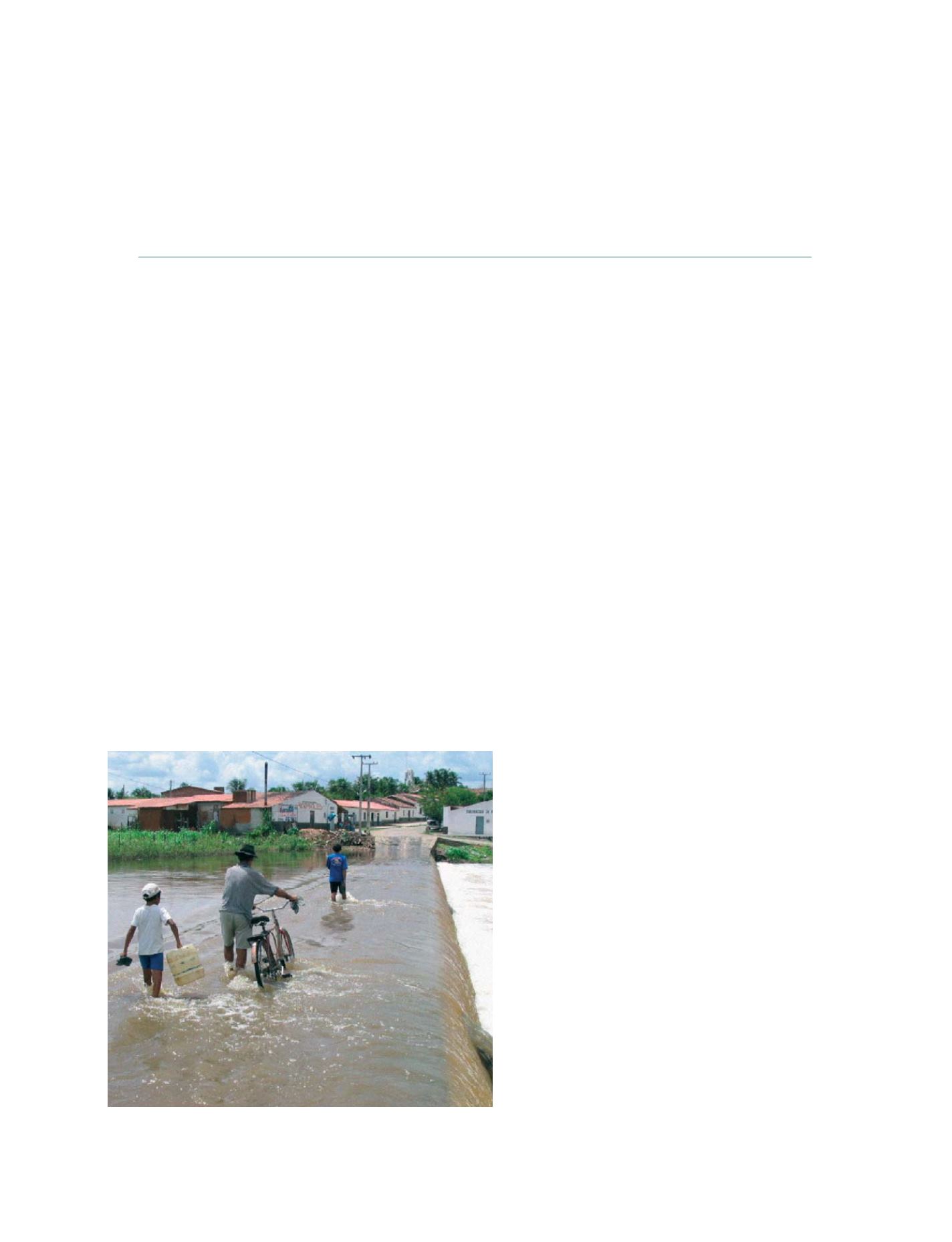

[
] 184
Applications of remote sensing
technologies for monitoring human health
Pietro Ceccato, Michael A. Bell, Tufa Dinku, Stephen J. Connor,
International Research Institute for Climate and Society (IRI), Columbia University
A
s a primary aspiration of human development, good
health remains a focus in all aspects of society. Depending
on its stage of socio-economic development, however, one
society may experience different types of health problems to
another. As a result, health problems facing rural African
communities today differ from those facing urban populations
in the developed world.
In sub-Saharan Africa, the greatest burden of disease morbidity and
related mortality stems primarily from infectious disease. Specifically,
HIV-AIDS, Tuberculosis (TB) and Malaria, as a group, have come to
be seen as a significant constraint to Africa’s development prospects.
Calls have been made for massive investment in health services and
control programmes in the most affected countries. Since its estab-
lishment in 2002 the Global Fund for AIDS, TB and Malaria has
mobilized significant financial, technical and political resources
toward the fight against these three diseases alone.
1
The high profile of health in development objectives is apparent
in the Millennium Development Goals (MDGs) for 2015, where three
of the eight goals are directly related to health care inter-
vention and outcomes. With Global Fund grant
commitments and disbursements now underway, atten-
tion is beginning to focus on a large group of diseases
confined to the ‘other’ category by health policy makers
and politicians. These so-called neglected diseases are
the viral, bacterial, and parasitic infections, together with
acute respiratory infections and diarrhoeal diseases,
which are all too common in the poorer countries of the
world. Despite the availability of cost-effective, success-
ful control interventions, large numbers of the world’s
poorest people remain afflicted or at risk from this group
of diseases.
Climate and environmentally sensitive diseases
Certain diseases are associated with particular environ-
mental conditions, season and climate. This was
recognized by the ancient writers of Vedic literature, by
Hippocrates, and is the focus of considerable research
today.
The World Health Organization (WHO) has targeted
a number of ‘climate-sensitive’ diseases, including
Malaria, and several of the so-called neglected diseases.
WHO acknowledges that this list does not include
several respiratory and non-communicable diseases
which may also be climate-sensitive.
While the implications of future climate change are
not known, we can be sure that health will remain a
major factor in social well being. If we are successful in
helping vulnerable communities to benefit from signif-
icant investments in health services and improved
management of climate sensitive disease in the imme-
diate future, then we will at least face the potential
impacts of climate change with a lower baseline of infec-
tions.
Earth observation to monitor
climate and environment
Satellite sensors developed in the United States, Europe,
Canada, Japan, India, and emerging countries by the
remote sensing community have contributed to a better
understanding of the ecology of environmental diseases.
The history of remote sensing and its application to
vector-borne diseases has been recorded over time in a
Many diseases are associated with rainfall anomalies which favour
the development of parasites and vectors
Photo: R. Taddei/IRI
S
OCIETAL
B
ENEFIT
A
REAS
– H
EALTH
















